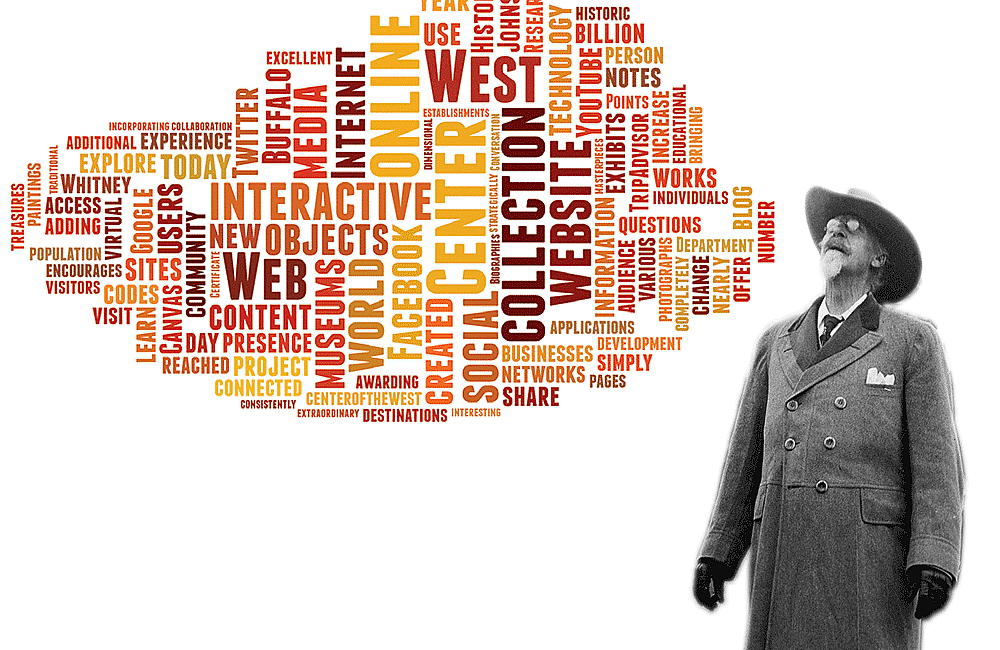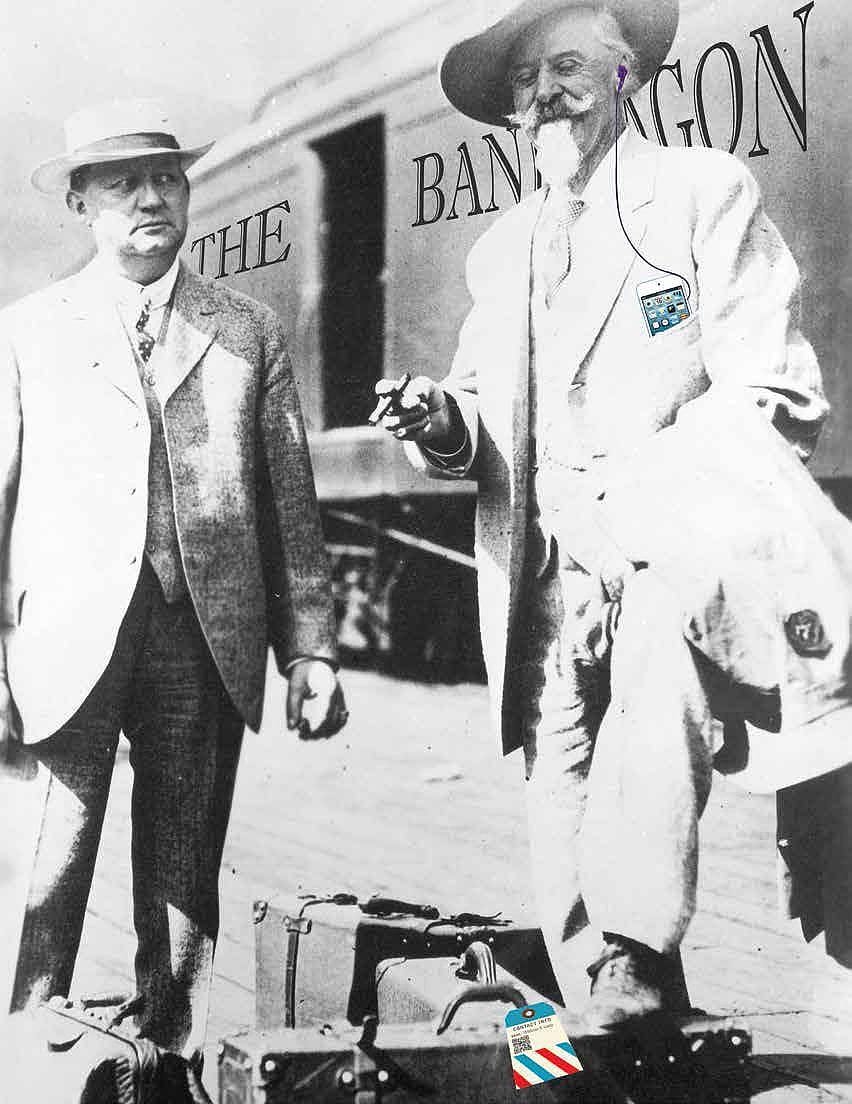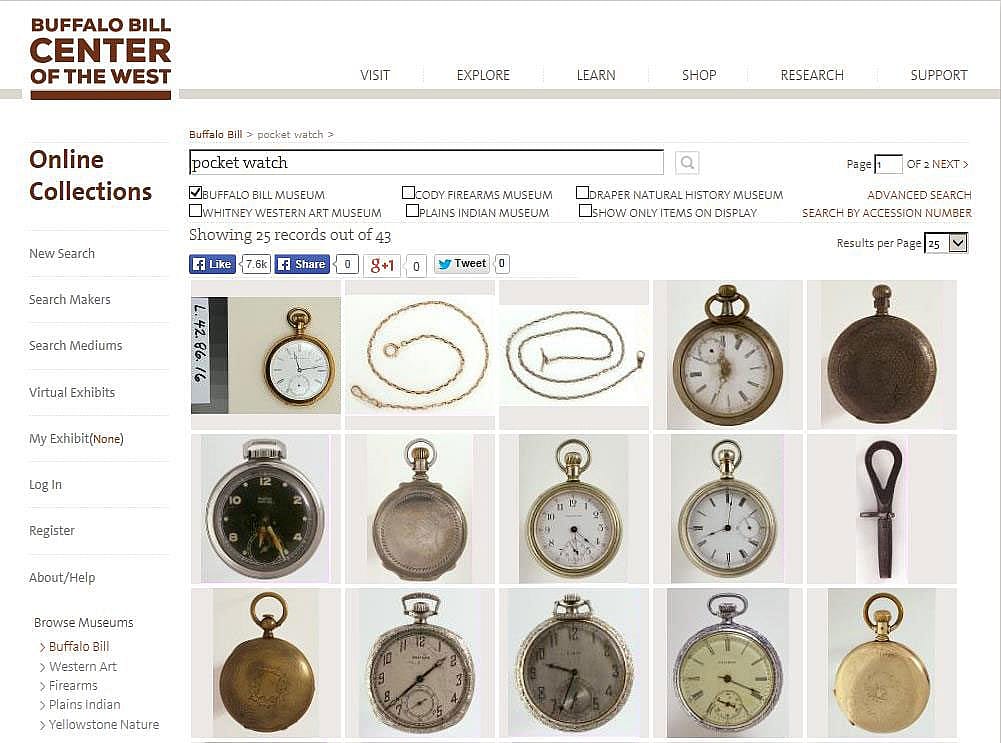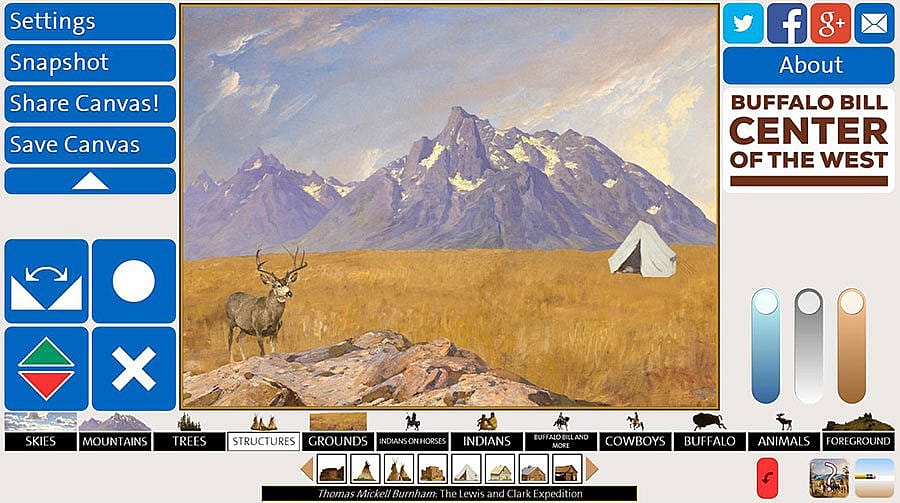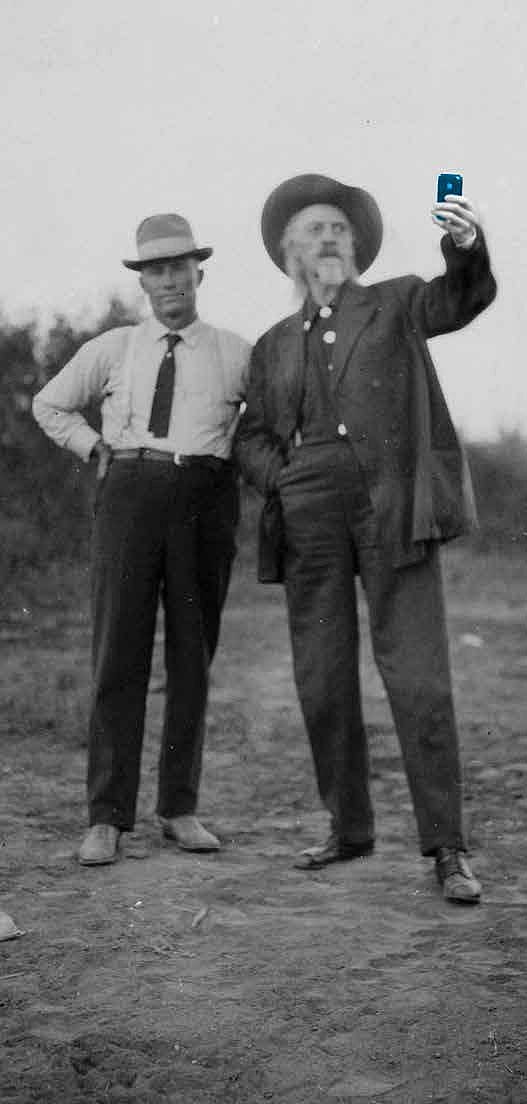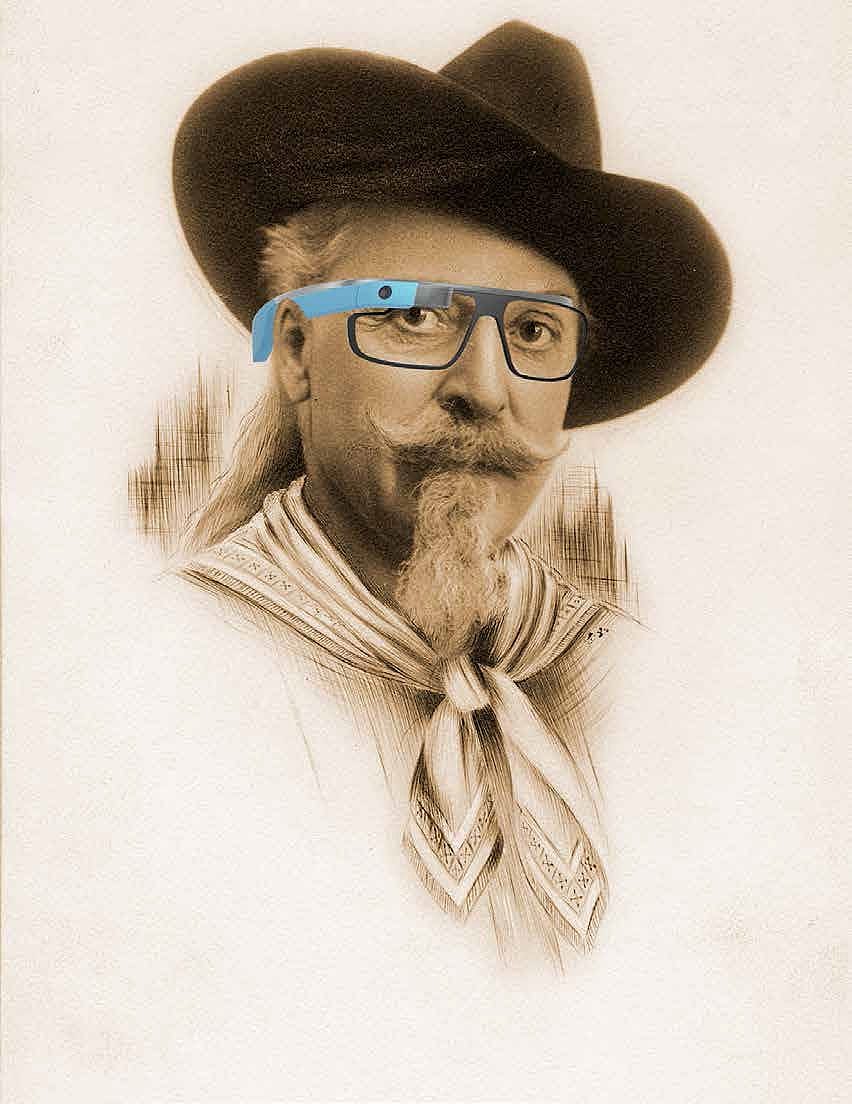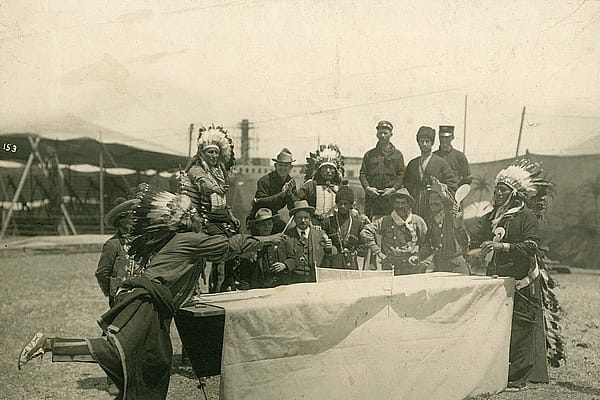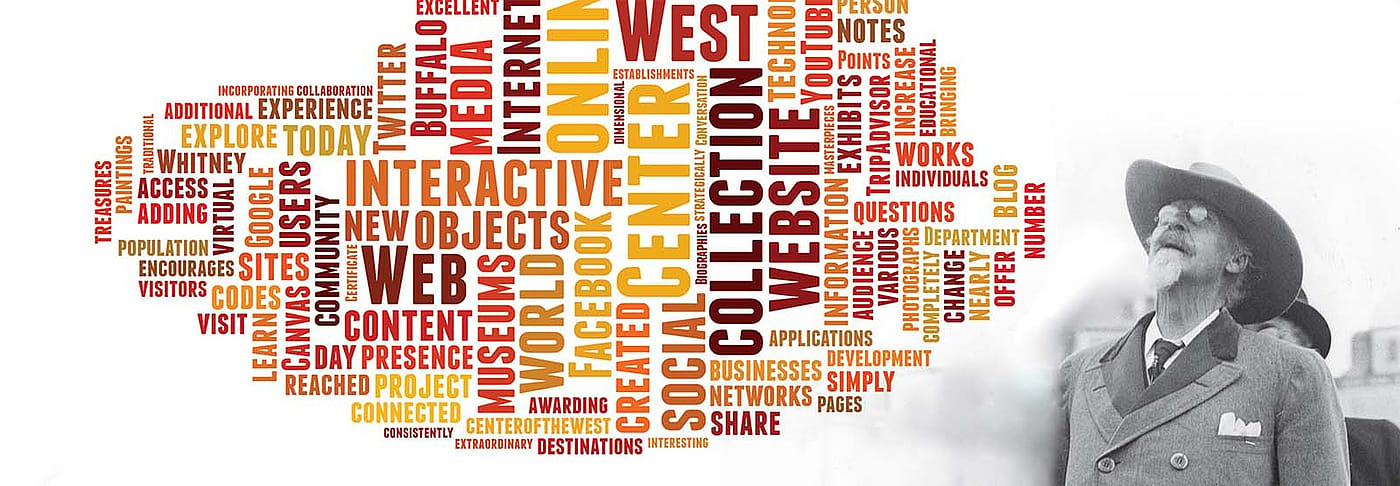
Center website casts a wide “Net” – Points West Online
Originally published in Points West magazine
September 2014
Center’s website casts a wide “Net”
By Marguerite House…
…and the Graphics, Information Technology (IT), Interpretive Education, and Public Relations Departments
The more we learn about William F. “Buffalo Bill” Cody, the more we’re convinced he’d have totally embraced today’s technology. Always at the forefront of the new and the novel, he no doubt would have checked his e-mail several times a day, texted his business associates when he and the Wild West were on the road, created a website for his show, and definitely wrote about it on his Facebook page. He was all about bringing the West to the world—as are we—and, with technology and the World Wide Web at our disposal, we have a great way to make that happen.
We’re sure our namesake would have approved…
Web 2.0 and away we go
According to a number of websites that count this sort of thing, 40 percent of the world population has an Internet connection today. The number of Internet users has increased ten times from 1999 to 2013. The first billion was reached in 2005—the second billion in 2010. The third billion will be reached by the end of 2014.
“Getting information off the Internet is like taking a drink from a fire hydrant,” says Mitchell Kapor, founder of Lotus 1-2-3, one of the first spreadsheet applications. Indeed, anyone who works daily with the World Wide Web—the Internet, the Web, cyberspace, e-communication, the Cloud, social media—can totally relate to Kapor. The content on the Web and the avenues through which users access it are never-ending and ever-changing.
In the early 2000s, Internet users learned about Web 2.0. This rather nebulous term describes today’s Internet, where interaction with data and other users—rather than merely accessing static, two-dimensional pages of data—is possible through the Web. As a matter of fact, Time magazine made a remarkable choice for its annual Person of the Year in 2006, awarding the title to the myriad of users who create content on social networks, blogs, wikis, and media-sharing sites.
“It’s a story about community and collaboration on a scale never seen before,” explained Senior Writer Lev Grossman in the cover story.
So, it was Web 2.0 that led to interactive and vibrant websites. It made possible Facebook, Twitter, YouTube, Pinterest, and all the other social media sites. Plus, websites became interactive, and an individual could become the “go to” expert on all kinds of subjects simply because he started a blog.
And it was Web 2.0 that led the Buffalo Bill Center of the West to get on that proverbial bandwagon.
Bringing the West in line with online
“Visit. Explore. Learn. Shop. Research. Support,” says the Center’s website. The information is extensive—as it should be for a facility with the span of content the Center has on everything and anything about the West.
Online ticket sales. Hours. Rates. News. Exhibitions. Collections. Points West. Events. Biographies. Blogs. Shopping. Joining. Contributing. Conversation.
And more…
Centerofthewest.org has grown into an interactive website with all the information necessary for research, trip planning, asking questions, buying tickets, purchasing gifts, event registration, and simply interacting with the West. With a redesigned website, interactive experiences, and additional web-based educational content ready to go or under development, the Buffalo Bill Center of the West is rapidly expanding its online presence.
For instance, in the most ambitious project to date, the Center has completely revamped its online collections database. Now, more than 20,000 objects from the Center’s extraordinary artifact collection appear online.
The collection had its start nearly ten years ago, when the first 541 objects, all from the Center’s Plains Indian Museum collection, debuted on a previous iteration of the website. While that version grew to include objects from three more of the Center’s other museums, the new online collection is a complete rebuild and now encompasses natural history specimens as well.
Seth Johnson, Information Technology Technician for the Center’s IT Department, spearheaded the project. “For us, this new release of our collections online is about more than displaying our treasures for the world to see,” says Johnson. “It’s an invitation for our virtual visitors to interact with our collections in new and interesting ways.”
…like the pocket watches in this “Virtual Exhibit,” also featured on the cover of the print edition of the Fall/Winter 2014 issue of Points West.
In addition to advanced searching and zooming in to details of images, online explorers are encouraged to “curate” their own virtual exhibits. You can choose objects, write an exhibit introduction and notes on each object, and post comments or questions about any of the objects in the collection. You can share them all through social media networks like Facebook, Twitter, and Google+, all of which increase our online presence.
Moreover, the Center of the West has nearly 500,000 historic photographs—like those that appear in this story—in the McCracken Research Library collection, thousands of which are online, with more added weekly. Click the “Online Collections” link on the homepage to explore the Center’s collections and historic photos. Prints of these photos—along with selected artwork—are also available online at prints.centerofthewest.org.
“Most of the projects our IT staff and web content creators are developing include this kind of interactivity to engage today’s technologically-connected audiences,” says Nancy McClure, who works with electronic communications for the Center’s Public Relations Department. “We’re incorporating interactivity for those who explore our website and social media sites, and we’re now moving into doing the same for those who visit the Center of the West in person.”
Take for example the “mobile scavenger hunt” that uses QR codes—those funky little black and white icons you find in ads and on products. By using a QR code reader on your smart phone or other mobile device, you can “collect” objects and earn level badges as you go. “Our online collections serve as a foundation for this project,” says Johnson, “so some codes take you to online object records; others connect to blog posts or videos”—all of which increase our Web traffic and online presence.
The codes are placed strategically throughout the Center’s museums and grounds to offer a challenge for searchers.
Create your West
On any given day during the busy summer season at the Buffalo Bill Center of the West, visitors in the Whitney Western Art Museum create their very own “masterpieces.” But wait—they’re not wielding brush and paint; they’re seated at a computer kiosk, and their canvas is digital.
Now, the popular “Create your West” activity expands beyond the physical space of the Whitney museum with a move to the Center’s website, broadening its reach to a worldwide audience. Introduced as one of several hands-on activities when the Whitney reopened in 2009 after renovation, the new program, called “History Canvas,” is revamped for a web-based audience.
Using images of various elements from paintings in the Center’s art collection, the online interactive program encourages you to mix and match them to create your own works of art. History Canvas has all the elements of a topnotch experience for young and old alike: It’s fun, easy, and yes, educational, too.
After creating a work of art, users can e-mail their treasure, or share it on the social media sites Facebook, Twitter, and Google+, adding to the Center’s online presence once again.
It’s smart to be social
“Social media is a blur of tweets, shares, and content,” observes Jeff Bullas, social media blogger, strategist, and speaker. “No longer is it just used by the young and the restless. It is global and embedded in every corner of the web.”
These days, literally billions of users access sites like Facebook, Google+, and YouTube. For the Center of the West, it was simply a case of “doing the math.” Just as Buffalo Bill brought the West to the world a hundred years ago, we knew that social media was a tool we could use to do the same today. We uploaded our first video on YouTube in 2007, joined Facebook in 2009, Twitter and Flickr in 2010, and Google+ last year.
Today we have 7,700 fans on Facebook—an excellent number when compared with other museums’ resident population and annual visitation.
Social media also extends to those websites on which individuals can express opinions about various services, products, and destinations. We regularly monitor TripAdvisor, the largest travel community in the world, along with Yelp, Twitter, and YouTube.
For the second year in a row, the Buffalo Bill Center of the West has earned the Certificate of Excellence Award from TripAdvisor. The honor is presented only to those establishments that consistently achieve outstanding traveler reviews, and is extended to qualifying businesses worldwide that represent the upper echelon of destinations listed on TripAdvisor’s website.
Technology—not just for kids any more
“The Internet is just a world passing around notes in a classroom,” claims TV personality Jon Stewart. We’d add, “There are just a gazillion notes and note-passers, that’s all.”
And, twenty-somethings aren’t the only note passers today. A significant percentage of all Internet users, across all age groups, have ventured into social media. In addition, mobile device use has more than doubled in the last five years. This growth is increasingly evident on our own website.
Even with all that, there’s more to come. “We’re still in the first minutes of the first day of the Internet revolution,” says Scott Cook, founder of Intuit, maker of computer applications QuickBooks and TurboTax.
And the Buffalo Bill Center of the West is ready!
We’re proud of our Web presence—our website, our social media pages, our mentions on travel sites, and our use of e-commerce and e-communication. Educators are using “Skype in the classroom” to reach kids all over the world. Our Development Department receives online donations daily. A dozen blogs and a couple dozen staffers are carrying on conversations every day about the Center of the West—observations, peeks behind the scenes, and the latest news and activities.
Yes, we think Buffalo Bill would have been proud, too, saying, “The West is just a click away at centerofthewest.org.”
We invite you to find your True West today at centerofthewest.org.
Post 048
Written By
Nancy McClure
Nancy now does Grants & Foundations Relations for the Center of the West's Development Department, but was formerly the Content Producer for the Center's Public Relations Department, where her work included writing and updating website content, publicizing events, copy editing, working with images, and producing the e-newsletter Western Wire. Her current job is seeking and applying for funding from government grants and private foundations. In her spare time, Nancy enjoys photography, reading, flower gardening, and playing the flute.
